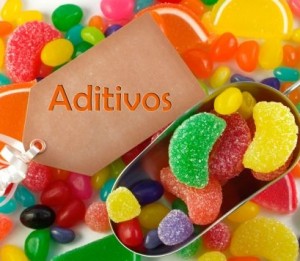MICROCOMPONENTS
ADDITIVES
PIGMENTS
STRUCTURE OF SOME PIGMENTS
SOME TYPES OF PIGMENTS

ORGANIC PIGMENTS
NATURAL PIGMENTS
INORGANIC PIGMENTS
ULTRAMARINE PIGMENTS
PHTHALOCYANINE PIGMENTS
QUINACRIDONE PIGMENTS
PIGMENTS PRODUCTION
INORGANIC PIGMENTS
ORGANIC PIGMENTS
FIBER
DEFINITION
It is the indigestible portion of food derived from plants and waste of animals that eat dietary fiber.
Non digestible material
Plant polysaccharides
Lignin
Hemicellulose
Cellulose
Pectin
Gum (botany
Resistant starch
Dietary Fiber
Types of Fiber
Soluble Fiber
Food Sources
Oat/Oat bran
Dried beans and peas
Nuts
Barley
Flax seed
Fruits such as orange and apples
Vegetables such as carrots
Psyllium husk
Insoluble Fiber
Food Sources
Vegetables such as green beans and dark green leafy vegetables
Fruit skins and root vegetables skins
Whole-wheat products
Wheat bran
Corn bran
Seeds & Nuts
Beenfits
Insoluble Fiber
Subtopic
CAU Dietary Fibre MJG
Vitamines
Interesting report of vitamins assupplement

Dosis recomendadas
Vitaminas segun la FAO
ENZYMES
Enzyme Classification
Oxidoreductases
Oxidation/ Reduction reactions
Industrial enzymes: peroxidases, catalases, glucose oxidases,laccases.
Transferases
Transfer functional groups to other molecules
Industrial enzymes: fructosyl-transferases, glucosyl-transferases
Hydrolases
Cleave bonds releasing water
Industrial enzymes: amylases,celluases, lipases, pectinases, proteases.
Lyases
Removal of functional groups
Industrial enzymes: alpha-acetolactate decarboxylases
Isomerases
Interconversions between isomers
Industrial enzymes: glucose isomerases
Ligases
Catalyse condensation between two compounds
Definition
Enzymes are essential for all metabolic processes. They are composed of amino acids and differ in function in that they have the unique ability to facilitate biochemical reactions without undergoing change themselves.
Enzymes: structure, characteristics and functions
Overview of Enzymes


Floating topic
Legislation
El Reglamento (CE) nº 1331/2008 del Parlamento Europeo y del Consejo, de 16 de diciembre de 2008
Publicación del Reglamento (UE) No 59/2014 de la Comisión, de 23 de enero de 2014, que modifica el anexo II del Reglamento (CE) no 1333/2008 del Parlamento Europeo y del Consejo en cuanto a la utilización de dióxido de azufre y sulfitos (E 220-228) en prod
Codex Alimentarius
Framework
COMBINED COMPENDIUM OF FOOD ADDITIVE SPECIFICATIONS
Rules on food additives, List authorised,
specifications, database
Acceptable Daily Intake
U.S. Food and Drug Administration
Marketing and Innovation
Crecimiento 5% en 2015
Innovacion y crecimiento económico 2013
Nuevos edulcorantes
Consumers
Controversy
Are additives as bad as is often assumed?
And the E numbered nitrate and nitrite preservatives in bacon, ham and sausages, linked to bowel cancer by the World Cancer Research Fund?
¿Son tan malos como los pintan?
Peligrosos?
Questions and Answers about Food Additives
About labelling and possible mistakes
Classification and Function
COLORANTES y ESTABILIZADORES COLOR
E-100 180
(por ej. E-120: cochinilla)
Modifican el color
Pueden ser naturales o artificiales: Analizado objetivamente, el coloreado de los alimentos es una actividad “cosmética”, que no contribuye a mejorar su conservación o calidad nutritiva, por lo que el nivel de riesgo aceptable para un beneficio pequeño ha de ser forzosamente muy bajo.
CONSERVANTES
E-200 a E-299
(por ej. E-249: nitrato potásico, salitre)
Demoran el deterioro de los alimentos, evitando el crecimiento de microorganismos
Los conservantes alimentarios, a las concentraciones autorizadas, no matan en general a los microorganismos, sino que solamente evitan su proliferación. Por lo tanto, solo son útiles con materias primas de buena calidad.
ANTIOXIDANTES
E-300 a E-392:
(por ej. E-300: ácido ascórbico)
Para evitar la oxidación de las grasas
La utilización de antioxidantes retrasa la alteración oxidativa del alimento, pero no la evita de forma definitiva.
EMULGENTES, ESTABILIZADORES, ESPESANTES Y
GELIFICANTES
E-400 a E-585
(por ej. E-322: lecitina de soja)
Dan estabilidad a las mezclas de grasas y agua
Gelificantes y estabilizantes (Celulosa, polifosfatos, gomas):
Tienen propiedades comunes con el componente de la dieta conocido como “fibra”, aumentando el volumen del contenido intestinal y su velocidad de tránsito.
Emulsionantes (Lecitina, Fosfatidos de amonio…):
Como ejemplo de emulsiones alimentarias puede citarse la leche, que es una emulsión natural de grasa en agua, la mantequilla, la margarina, la mayoría de las salsas y las masas empleadas en repostería, entre otras.
EDULCORANTES
E-900 a E-960
(por ej. E-951: aspartamo)
Edulcorantes (Ciclamato, Sacarina, Aspartamo…):
Para que un edulcorante natural o artificial sea utilizable por la industria alimentaria, además de ser inocuo, tiene que cumplir otros requisitos: el sabor dulce debe percibirse rápidamente, y desaparecer también rápidamente, y tiene que ser lo más parecido posible al del azúcar común, sin regustos. También tiene que resistir las condiciones del alimento en el que se va a utilizar, así como los tratamientos a los que se vaya a someter.
OTROS
PARA REVESTIMIENTO
E-900 A E-914
(por ej. E-901: cera de abejas)
POTENCIADORES DEL SABOR
E-600 a E-699
(por ej. E-621: glutamato sódico)
REGULADORES DE LA ACIDEZ
E-500 a E-599
What are additives?
Food additives are:
Sweeteners to sweeten foods or in table-top sweeteners;
Colours adding or restoring colour in a food;
Preservatives prolonging shelf-life of foods by protecting them against deterioration by micro-organisms;
Antioxidants prolonging shelf-life of foods by protecting them against oxidation e.g. fat rancidity, colour changes;
Stabilisers to maintain the physico-chemical state of a foodstuff;
Emulsifiers to maintain the mixture of oil and water in a foodstuff.
Added to food for technological purposes in its manufacture, processing, preparation, treatment, packaging, transport or storage, food additives become a component of the food. EU legislation describes 26 different technological functions.
EFSA
Chemicals in food (Safe levels)

